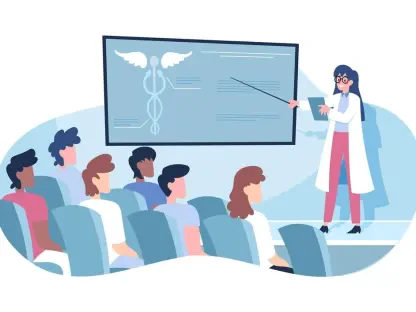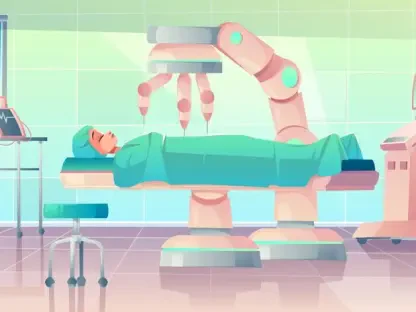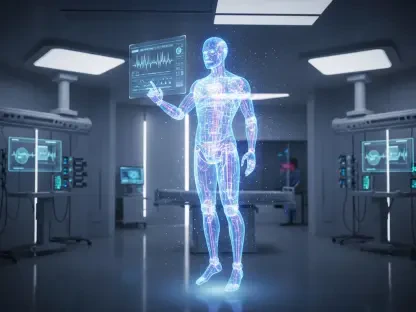Navigating the complex world of healthcare insurance requires not just expertise, but also a deep commitment to understanding the nuances of both medical technology and patient advocacy. Faisal Zain, a pioneer in the field of medical devices and diagnostics, brings valuable insights into the challenges and innovations shaping today’s healthcare landscape.
Can you share more about Eric Tennant’s initial diagnosis and the journey since then?
Eric Tennant’s journey began with a devastating diagnosis of a rare bile duct cancer, which by then had metastasized to his bones. The outlook was grim, with doctors predicting less than a year to live. However, through unyielding chemotherapy, Eric managed to slow the cancer’s relentless advance. Despite the grueling side effects that severely impacted his quality of life, there was a flicker of hope when his wife discovered histotripsy—a cutting-edge treatment that could potentially extend his life and offer him respite from chemotherapy’s harsh regimen.
How did you first learn about histotripsy, and what was your initial reaction?
When I first came across histotripsy, it was through conversations with healthcare innovators who were excited about this non-invasive procedure. The technology harnesses precise ultrasound waves to target and destroy tumors. My initial reaction was one of intrigue; it represented a huge step forward in medical treatment, offering a potential alternative to more invasive and debilitating options. However, the challenge lies not only in the medical effectiveness but also in ensuring that such advanced treatments are accessible to patients who desperately need them.
What specific reasons did your health insurer give for denying coverage of the histotripsy procedure?
Eric’s insurer deemed the histotripsy procedure “not medically necessary,” citing a lack of evidence in its effectiveness over existing treatments. This is a common hurdle in approving newer technologies, where insurers often require extensive proof of benefit and cost-effectiveness before committing to coverage. Their stance reflects a broader systemic issue where innovative treatments lag in acceptance due to bureaucratic inertia.
How did you navigate the appeals process? What obstacles did you encounter along the way?
Navigating the appeals process was like being caught in a relentless cycle of waiting and rejections. The primary challenge was the slow and often opaque nature of the system. Each appeal required substantial documentation and justification, only to face delays and noncommittal responses. The dissonance between medical recommendations and insurer decisions left us in a frustrating limbo, trying to align diverse entities with varying priorities.
Can you describe the emotional and psychological impact this insurance denial had on your family?
The denial was a heavy emotional blow. It amplified the stress and uncertainty we were already grappling with due to Eric’s diagnosis. The constant battle for something that seemed a lifeline to improved health was emotionally draining and took its toll on our family dynamics. It highlighted the stark reality of a system where patients often feel helpless and unheard, battling not just the illness, but an equally challenging healthcare framework.
How did it feel to constantly be redirected between the insurer and different healthcare companies during the appeal process?
It was a frustrating game of redirection, much like being a ball bounced between players in a game with high stakes and unclear rules. Each interaction felt less about patient care and more about administrative process. We were left with the sense that no single entity was willing to take accountability, reinforcing a feeling of isolation in a deeply impersonal system.
What are your thoughts on the effectiveness of the current prior authorization system?
The prior authorization system, in its current form, often acts as a barrier rather than a facilitator of patient care. While it aims to control costs and ensure appropriate treatments, it frequently results in delays that can be detrimental, as we experienced. The system’s complexity and lack of transparency hinder its effectiveness, needing significant reforms to truly align with patient needs and medical advancements.
How did the media involvement influence your case, and do you think it had any role in the reversal of the insurance decision?
Media attention was like spotlighting a shadowy corner, it brought urgency and accountability to the issue. By highlighting our struggle, it pressured the insurer to review their stance more closely. Although I can’t assert that media coverage was the sole catalyst, it undoubtedly played a role in breaking the impasse, showcasing the power of public scrutiny in invoking change within rigid systems.
In your opinion, what changes need to be made to improve the insurance appeals process for patients?
There needs to be a more patient-centric approach. Streamlining the process, introducing clear timelines, and ensuring greater transparency can significantly enhance the system. Moreover, involving medical experts relevant to the treatment in the decision-making process and creating pathways for direct dialogue between patients and insurers could foster understanding and facilitate more equitable resolutions.
What advice would you give other patients facing similar denials from their health insurers?
Stay persistent and informed. Arm yourself with knowledge about your condition and the treatments available, and don’t hesitate to enlist support—whether legal, medical, or from patient advocacy groups. Advocacy amplifies your voice and having documentation at hand can strengthen appeals. While patience is critical, so is knowing when to leverage media and public platforms to highlight your plight, as visibility can often catalyze change.









